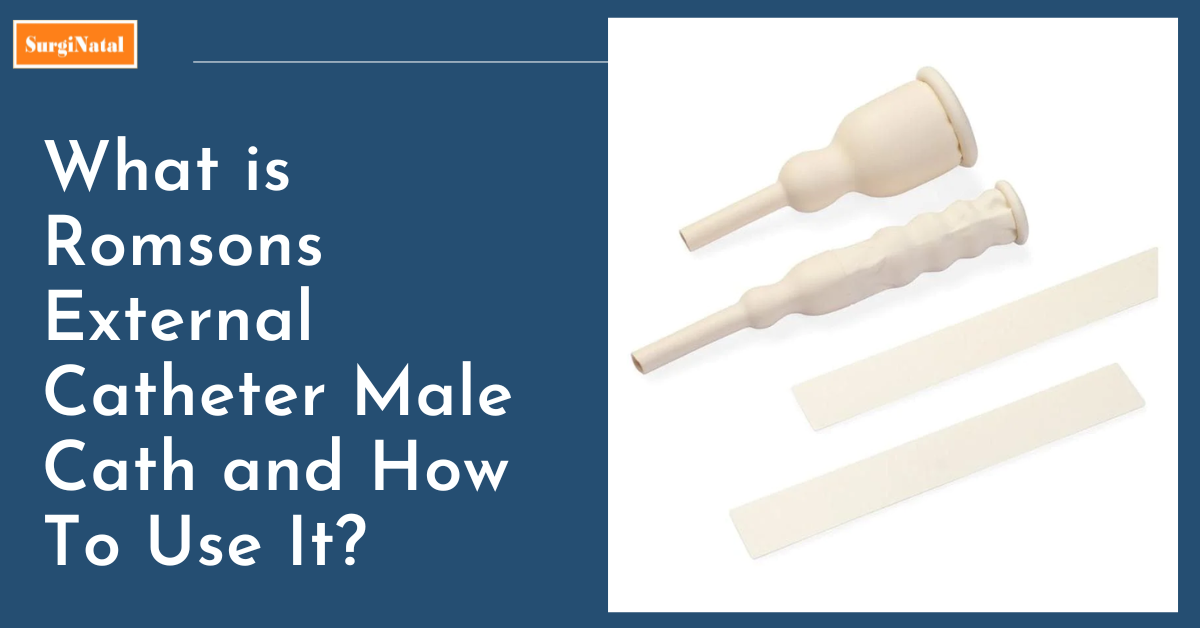
Unravelling Types, Sizes, and Applications of Cannulas
In the intricate realm of medical instrumentation, few devices play as pivotal a role as cannulas. These slender, flexible tubes have become indispensable in various healthcare settings, facilitating a multitude of procedures and treatments. As we embark on this exploration of the diverse landscape of cannulas, our focus will be on understanding the intricate details that define these essential medical tools, with a spotlight on the various types that serve distinct purposes.
Cannulas, often referred to as the unsung heroes of medical interventions, are hollow tubes designed to deliver or extract fluids from the body. Their applications span a broad spectrum, ranging from simple oxygen delivery in respiratory therapy to intricate surgical procedures. The crux of our discussion centers around the different types of cannulas that have emerged to meet the specific demands of diverse medical scenarios.
Join us on this journey as we delve into the nuanced world of cannulas, unraveling their significance, and gaining insights into the specialized functions each type fulfills. Whether you are a healthcare professional seeking to enhance your knowledge or an individual curious about the instruments that contribute to modern medical marvels, this guide aims to provide a comprehensive understanding of the types of cannulas and their indispensable roles in the healthcare landscape.
Types of Cannulas
Cannulas, versatile in their applications, come in various forms to address specific medical needs. Understanding the distinct types is crucial for healthcare professionals and enthusiasts alike. Let's explore some of the key types of Cannulas:
1. Nasal Cannulas:
Nasal cannulas are a familiar sight in healthcare settings, primarily utilized for delivering supplemental oxygen to patients. These consist of lightweight tubes with two prongs that fit into the nostrils, allowing for a continuous and controlled flow of oxygen. Ideal for patients with respiratory conditions, nasal cannulas provide a non-invasive method of oxygen administration.
2. Intravenous (IV) Cannulas:
Intravenous cannulas, or peripheral venous catheters, play a pivotal role in delivering fluids, medications, or blood products directly into a patient's bloodstream. Available in various sizes (gauges) to accommodate different viscosity of fluids, these cannulas are essential for a wide range of medical interventions, from hydration to medication administration.
3. Tracheostomy Cannulas:
Specifically designed for patients with a tracheostomy, tracheostomy cannulas facilitate breathing by creating a secure airway through the neck. These cannulas come in various sizes and configurations to suit individual patient needs. They play a critical role in maintaining a patent airway for individuals who have undergone tracheostomy surgery.
4. Arterial Cannulas:
Arterial cannulas are employed for monitoring blood pressure and obtaining blood samples directly from arteries. Typically used in critical care settings and during surgeries, these cannulas allow continuous and real-time monitoring of blood pressure, ensuring timely interventions in patients with cardiovascular conditions.
5. Pediatric Cannulas:
Specially crafted for infants and young children, pediatric cannulas are designed with their unique anatomical considerations in mind. These cannulas are smaller in size and are gentler to ensure optimal comfort for pediatric patients requiring oxygen therapy or other medical interventions.
Understanding Different Types of Cannula Sizes, Injection Port, Colour Coding, and Uses
| Cannula Type | Size (Gauge) | Port Configuration | Cannula Colour Coding | Primary Use |
| Nasal Cannula | Varies | Single port | Green | Oxygen delivery during respiratory therapy |
| Intravenous Cannula | 14 - 24 | Single or double | Colour-coded per size | Administration of fluids and medications |
| Tracheostomy Cannula | Varies | Single or double | Blue | Facilitating breathing in tracheostomized patients |
| Arterial Cannula | 16 - 22 | Single port | Red | Continuous blood pressure monitoring and blood sampling |
| Pediatric Cannula | Varies | Single port | Colour-coded for size | Oxygen therapy and medical interventions in pediatric patients |
This table provides a concise overview of the different cannula types, their sizes, port configurations, cap colors, and primary uses. It serves as a quick reference guide for healthcare professionals and enthusiasts seeking to understand the specifications of each cannula type.
Exploring the Diverse Applications of Cannulas in Modern Healthcare
Cannulas, with their diverse types and configurations, find extensive applications across various medical fields. The versatility of these slender tubes makes them indispensable in a multitude of healthcare scenarios. Let's delve into the specific applications that highlight the significance of cannulas in modern medicine:
Respiratory Therapy:
Cannulas, especially nasal cannulas, play a pivotal role in respiratory therapy. They are commonly employed for delivering supplemental oxygen to patients with respiratory conditions such as chronic obstructive pulmonary disease (COPD) or during post-surgical recovery. The non-invasive nature of nasal cannulas makes them a preferred choice for ensuring optimal oxygenation without causing discomfort.
Intravenous Administration:
Intravenous cannulas are extensively utilized for administering fluids, medications, and blood products directly into the bloodstream. This method ensures rapid and effective delivery of therapeutic agents, making intravenous cannulation a cornerstone in various medical interventions, including hydration, antibiotic therapy, and chemotherapy.
Critical Care and Surgery:
Cannulas, such as arterial cannulas, find crucial applications in critical care settings and surgical procedures. Arterial cannulation allows for continuous monitoring of blood pressure and facilitates the sampling of arterial blood for various diagnostic tests. In surgery, cannulas play a role in maintaining stable conditions during procedures, contributing to the overall success and safety of the operation.
Paediatric Medicine:
Paediatric cannulas are tailored to meet the unique needs of infants and young children. These cannulas, often with colour-coded sizing for ease of use, are employed in paediatric wards for oxygen therapy and other medical interventions. Their design ensures both efficacy and comfort, addressing the specific anatomical considerations of paediatric patients.
Tracheostomy Management:
Tracheostomy cannulas are vital for patients who have undergone tracheostomy surgery, providing a secure airway for breathing. These cannulas facilitate long-term respiratory support and are instrumental in managing patients with conditions such as spinal cord injuries, neuromuscular disorders, or severe respiratory distress.
Specialized Medical Procedures:
Cannulas with distinct cap colors, such as pink or yellow, are often designed for specialized medical procedures. These may include specific diagnostic tests, therapeutic interventions, or situations where the unique features of the cannula are optimized for particular medical requirements.
Understanding the wide-ranging applications of cannulas underscores their significance in modern healthcare. Whether in routine clinical settings or critical care scenarios, cannulas contribute to improved patient outcomes and play an integral role in the hands of skilled healthcare professionals. In the following sections, we will further explore considerations for selecting the appropriate cannula for specific applications and delve into emerging trends in cannula technology.
Most Important Facts to Know About Cannulas:
As we unravel the intricate world of cannulas, it's crucial to highlight key facts that underscore their importance and usage in the medical field:
1. Precision in Sizing:
The size of a cannula, often denoted by its gauge, is a critical factor. Choosing the appropriate size ensures optimal functionality and minimizes discomfort for the patient. Nasal cannulas and intravenous cannulas, for instance, come in a range of sizes to accommodate diverse medical needs.
2. Port Configurations Matter:
The configuration of ports on a cannula influences its application. Single or double ports, as seen in intravenous and tracheostomy cannulas, determine the flow and direction of substances. Understanding these configurations is essential for healthcare professionals to make informed decisions during medical interventions.
3. Cap Colors Convey Information:
Cannulas with color-coded caps serve as a visual cue for healthcare practitioners. Colors often denote specific sizes or features, aiding quick identification and ensuring accurate usage. Familiarity with cap color conventions enhances efficiency and reduces the risk of errors in medical settings.
4. Patient Comfort is Paramount:
Design considerations, especially in pediatric and nasal cannulas, prioritize patient comfort. The materials used, curvature, and weight of the cannula play a crucial role in ensuring a positive experience for the patient, particularly during prolonged usage.
5. Versatility Across Specialties:
Cannulas demonstrate versatility across various medical specialties. From respiratory therapy to critical care, surgery, and pediatric medicine, these devices adapt to diverse clinical scenarios, contributing significantly to patient care and treatment outcomes.
6. Continuous Advancements in Technology:
The field of cannula technology is dynamic, witnessing continuous advancements. Innovations in materials, design, and manufacturing processes aim to enhance performance, durability, and patient outcomes. Staying abreast of these developments ensures that healthcare professionals can leverage the latest tools for optimal patient care.
Conclusion:
In conclusion, cannulas stand as indispensable instruments in the hands of healthcare professionals, seamlessly integrating into diverse medical practices. From the delivery of life-sustaining oxygen to precise intravenous administration and specialized procedures, cannulas play a vital role in enhancing patient well-being.
As we navigate the intricate landscape of cannulas, it becomes evident that understanding their types, applications, and key considerations is fundamental. This guide has aimed to shed light on the essential aspects of cannulas, from their types and applications to the nuances of sizing, port configurations, and color coding. Armed with this knowledge, healthcare professionals and enthusiasts alike can navigate the world of cannulas with confidence, ensuring optimal patient care and contributing to the ever-evolving landscape of medical advancements.






